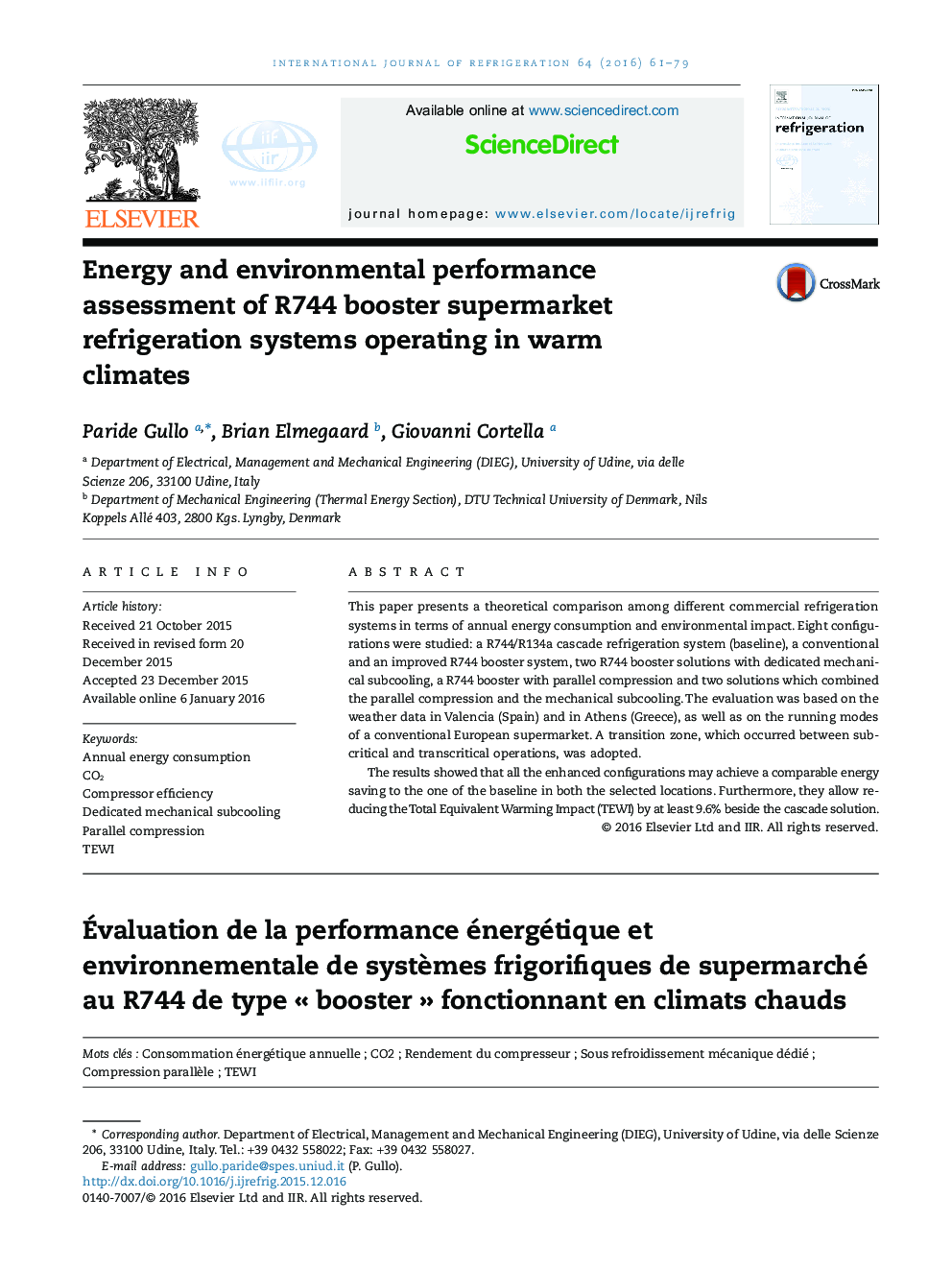| Article ID | Journal | Published Year | Pages | File Type |
|---|---|---|---|---|
| 786766 | International Journal of Refrigeration | 2016 | 19 Pages |
•Annual energy consumption of different R744 refrigeration plants is compared.•Two different warm locations are taken into account.•Use of dedicated mechanical subcooling allows reducing energy consumption markedly.•Parallel compression is more convenient for external temperatures up to 33 °C.•All the enhanced R744 booster systems lead to a substantial reduction in TEWI.
This paper presents a theoretical comparison among different commercial refrigeration systems in terms of annual energy consumption and environmental impact. Eight configurations were studied: a R744/R134a cascade refrigeration system (baseline), a conventional and an improved R744 booster system, two R744 booster solutions with dedicated mechanical subcooling, a R744 booster with parallel compression and two solutions which combined the parallel compression and the mechanical subcooling. The evaluation was based on the weather data in Valencia (Spain) and in Athens (Greece), as well as on the running modes of a conventional European supermarket. A transition zone, which occurred between subcritical and transcritical operations, was adopted.The results showed that all the enhanced configurations may achieve a comparable energy saving to the one of the baseline in both the selected locations. Furthermore, they allow reducing the Total Equivalent Warming Impact (TEWI) by at least 9.6% beside the cascade solution.
